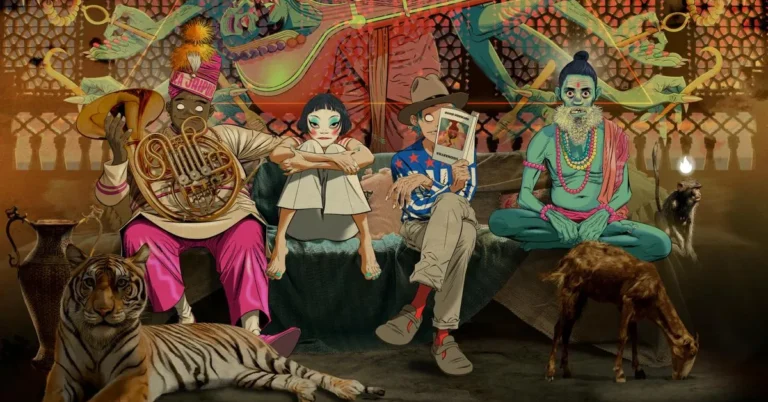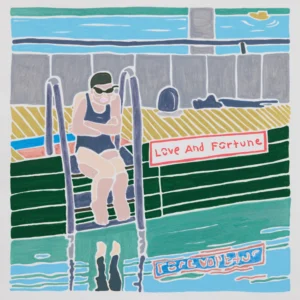In 2025, AI tools are rocking the business market. Thousands of content creation tools are launched each quarter, making it easier for businesses to improve their brand awareness on a global scale. But unfortunately, you’re still stuck on ChatGPT. Although incredible, ChatGPT is not your answer to everything.
Content creation is a key to enhancing your product, services, or brand today, and it is not the same as it was a couple of years back. Now you can leverage AI to come up with unique ideas, streamline workflows, and even generate complete videos without hustling for hours on the video editing tools. This is just the present, and the future will be even more promising.
But with several thousand AI tools, it is easy to get overwhelmed and very hard to figure out which ones are actually worth your time. Let’s cut you some slack by introducing the best AI tools in the market for a complete content creation journey.
Clever AI Humanizer (Best AI to human text converter )
AI writing is fast, but it often lacks the warmth and flow of real human language. Clever AI Humanizer bridges that gap. Clever AI Humanizer rewrites AI-generated text so it sounds as if a real person had written it, usually expressive, natural, and full of life.
The tool runs directly in your browser and works beautifully on any device. There’s no software to install, and no account is required. Just paste your text, click once, and watch it transform into something believable and smooth.
Whether you’re creating blog posts, website copy, emails, or marketing materials, Clever AI Humanizer helps your content sound real and trustworthy. Fast, free, and multilingual, it’s one of the best tools for anyone who wants their AI-generated text to stay natural and undetectable.
Jasper (AI Writing Partner)
Jasper is stealing the spotlight in the writing industry. As one of the most advanced AI writing assistants, it can help you create blog posts, email campaigns, product descriptions, working hooks, video script ideas, and so much more.
What makes it better than most other tools is that it can copy your tone of voice. All you need to do is train this assistant with your unique voice, and it’ll generate all the content accordingly. This is one of the most important features to keep your brand or individual content consistent. Another highlight of this tool is its built-in feature of SEO guidance. Which means your content will be optimized to perform better online.
Neolemon (Character Consistency Master)
Have you ever tried creating a children’s book or comic series only to find that your character looks completely different in every scene? This is the biggest frustration creators face with tools like Midjourney or DALL-E. Neolemon was built specifically to solve this problem.
Unlike general AI image generators that create random variations every time, Neolemon locks in your character’s identity: their face, hair, body type, and clothing. Then it lets you place them in unlimited poses, expressions, and scenes while keeping them perfectly recognizable. You can describe your character once or upload a reference photo, and the tool generates consistent illustrations in under 60 seconds.
What makes Neolemon stand out is its multi-pose generation feature. You can create full character sheets showing your character standing, sitting, running, or expressing different emotions all at once. Choose from preset styles like Pixar-inspired 3D animation, coloring book lines, anime, or watercolor illustrations. Over 20,000 creators rely on Neolemon to bring their stories to life without hiring expensive illustrators. The platform includes commercial usage rights on paid plans, making it perfect for self-publishers, educators, and marketers who need a consistent brand mascot.
Neural Frames (Bringing Music and Visuals Together)
Video content performs the best on social media platforms. However, creating a good video can take hours to days or even weeks, and producing them in high quality can be very costly. This is where AI music video generator tools like Neural Frames play a life-saving role.
You don’t need a full crew, lighting, musical instruments, or weeks of editing to create a well-performing video anymore. Just upload your audio track in neural frames, and it’ll generate a visually stunning music video for you in a couple of minutes.
The best thing about it is the stylistic customization. This feature ensures that no two videos are the same. So, you can easily create more videos on a professional level without needing a professional budget.
Runway (AI Video Editing at Scale)
If you have diverse video editing needs, Runway has been one of the most reliable tools for years. You can use its collection of AI features to handle the tedious editing tasks like enhancing visuals, removing background, or even creating new scenes or extending your video or image from text descriptions.
The real-time collaboration feature further makes it a popular choice for marketing teams and production houses in particular. Also, unlike other video editing methods that require you to spend hours refining a clip frame by frame, Runway allows you to use automation to get the work done in minutes.
Descript (Podcasting and Beyond)
Podcasts are in demand more than ever, which is why Descript has become one of the go-to tools for creators in this space. It makes editing incredibly simple by automatically transcribing the audio and allowing you to remove the filler words, add voiceovers, and generate captions with a few simple clicks.
This year, Descript has expanded its AI features with more advanced voice tools. You can now produce more professional narrations without recording every line yourself. This feature is the gold standard, especially for solo podcasters and video creators who want to scale their production without investing more or losing quality.
Mid Journey (Visual Storytelling)
AI-generated artwork is also gaining high viewer attention in 2025. MidJourney allows you to create custom illustrations, social media backgrounds, and even concept designs. You can generate unique and eye-catching visuals within minutes. In the business industry, marketing teams extensively use this tool to brainstorm campaign concepts or to create supporting graphics for blogs and newsletters. All you need to do is give your prompt regarding the visuals, and MidJourney will create an original idea that is entirely yours.
Lumen5 (Short-form Video Content Expert)
Short form videos perform the best on every social platform, may it be Instagram, YouTube, TikTok, or even LinkedIn. Lumen5 helps you keep up with your competitors. This AI tool converts blog posts, articles, or even raw text into short-form videos ready to be shared across your platform. It handles everything from visuals, transitions, and color gradients to background music. You only need to work on the written content, and Lumen5 will turn your idea into a full-fledged video. This tool is especially powerful for repurposing your previous content across multiple formats.
Notion AI (Smart Organization and Content Planning)
Content creation doesn’t end with generating the visual pieces. You need to plan your projects, series, or concepts in such a way that they’ll sell to the audience. Notion AI is particularly famous among creators who need to generate outlines, organize projects, and draft content directly inside their workspace.
Let’s say you’re planning a blog series. Notion AI will suggest topic clusters, draft rough outlines, and keep everything neatly organized in your editorial calendar, so it is easy to take things forward. It acts like your personal assistant who never forgets your deadlines.
Final Thoughts
In 2025, every creative job needs assistance from AI. These tools are not here to replace you, but rather, they empower you to improve your productivity and stay ahead of the competitors. As a solo creator or a part of a larger team, you can integrate the right AI tools that can boost your workflow. Try to experiment with a couple of AI tools and select the one that fits best with your style and ease.













